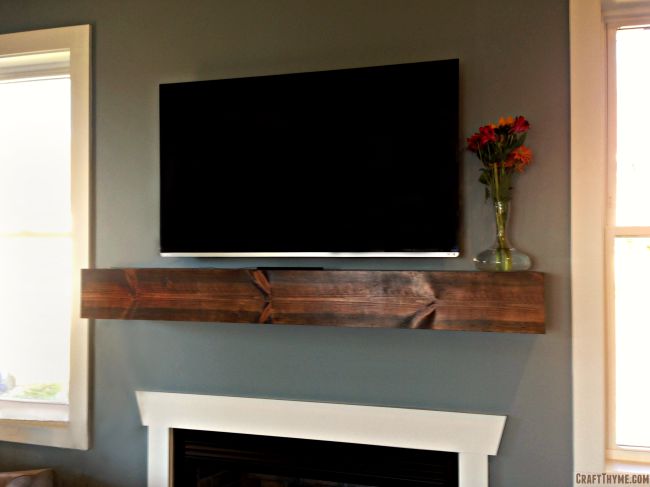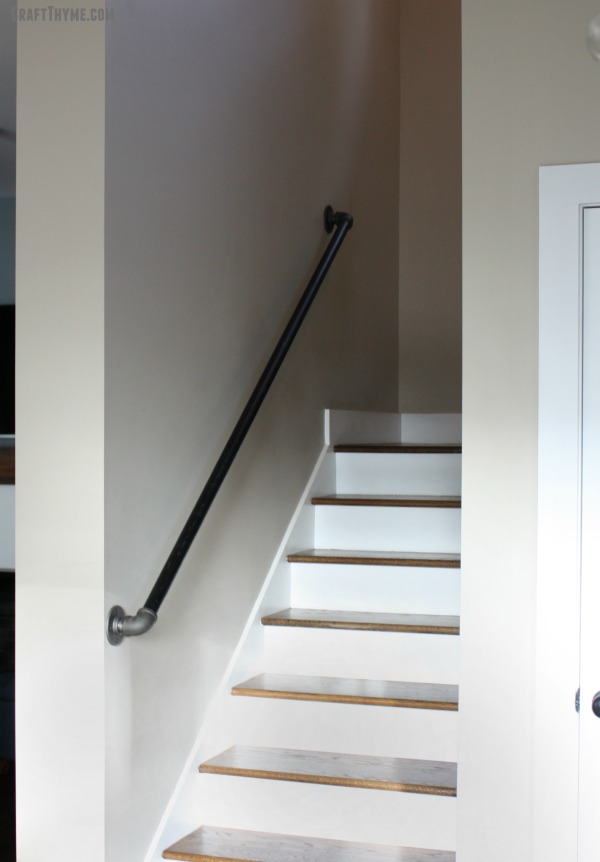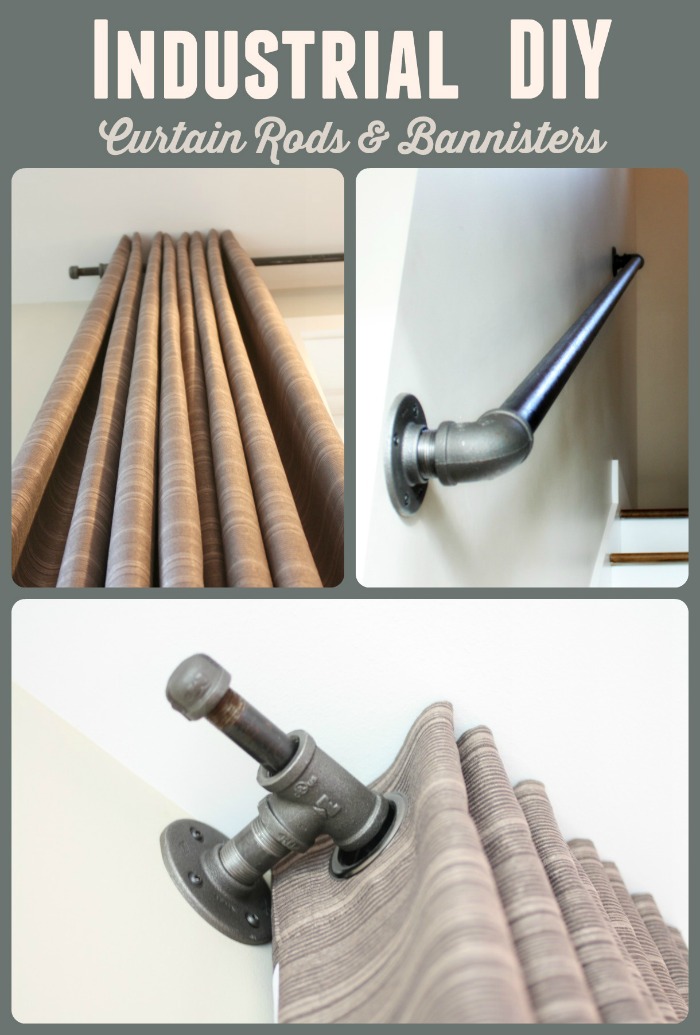
When we first bought our home, Brianna and I loved all but two things: the accent wall color in the living room and the fireplace mantle. The accent wall was easy to take care of – just simply slap on a coat of paint! (Valspar Winter Flannel for those curious minds.) Fixing our “dinky mantle” however required a little more work. It, and the fireplace surround, were supposedly built to mirror the built-in shelves to the right of the room. Apart from being white, we just weren’t seeing it. So in keeping with our theme, we took a day and decided to transform our mantle into something that really stood out in the space.
The Before: Behold the “Dinky Mantle”
Supplies
- 3 – 1″ x 8″ x 8″ White Pine Lumber
- 2 – Foam Brushes
- Rust-Oleum Dark Walnut Stain
- Rust-Oleum Semi-Gloss Polyurethane
- Cotton Rags (for stain removal)
- 1-1/4″ Brad Nails
- Brad Nailer
- Air Compressor
A few notes about your lumber selection:
You can work with any type wood. White pine tends to be the most affordable of the “furniture grade lumber” and it fit into our budget the best at the time. It’s a good standard lumber and it stains well. If you hope to achieve a consistent look and feel with your finished piece, try to pick pieces of lumber with a similar wood grain. The sizes and lengths noted above were what we needed for our application/space. Your needs will most certainly differ.
Step-By-Step Instructions
This project is what I like to refer to as a beer project. Outside of operating a saw and a nail gun (which you should ALWAYS do sober – 100% sober), there are a lot of “stain, wipe, dry” and “poly, dry, poly, dry” steps during which you should have ample opportunity to enjoy a tasty beverage.
Step 1: Measure
Ok, so you probably did this prior to purchasing your lumber in order to ensure you bought enough, but when it comes time to cut your lumber, you want to be certain that you’ve measured correctly. Measure again, take note of the dimensions you need to cut, translate those measurements by marking your lumber, and get ready to break out the saw of your choice.
Step 2: Cut!
Carefully cut your wood to your desired dimensions. For our project, our cut list was as follows:
- 1 – 64″ (Mantle Front)
- 2 – 61″ (Mantle Top & Bottom)
- 2 – 7-1/4″ (Mantle Sides)
Yes, this left quite a bit of wood left over. Think: FUTURE PROJECT! You may be able reduce waste by purchasing longer lumber, but I very often have trouble finding straight lumber of this dimension in longer lengths.
Step 3: Stain and Rub Your Wood
With everything cut, break out your favorite shade of wood stain. Apply your stain as per the provided instructions. Wipe off the excess product after 2-3 minutes. If you’re happy with the color, great! If not, wait the indicated number of hours, apply a second coat, and rub everything down again.
Rubber gloves are essential to keeping your skin unstained. Somehow, I always forget this…
Step 4: Break out the Poly
When you’re happy with the look of your stain, it’s time to apply a protective coat of polyurethane. The type of finish is up to you; matte, satin, semi-gloss, or gloss. We’d played around with matte poly finishes in the past and weren’t too happy with the end result. For this application, we ended up going with a semi-gloss finish and were thrilled with the final look.
It may take more than one coat of poly to achieve a uniform coat. Let the polyurethane dry as per the manufacturer’s instructions and reapply. Repeat until you’re happy with the resulting finish.
Step 5: Assembly and Installation
This is where all of your hard work comes together, and for us, this step was a breeze! Our new mantle is simply a cover-up of the existing, so all of our major mounting was already taken care of for us.
- Starting with the top, center the piece of lumber you selected for this position over your existing mantle. Using your brad nailer, fasten this board to the existing mantle. Be generous with your use of nails; they’re tiny and you won’t see them.
- Add your side panels by nailing them to the ends of the top panel you just installed Carefully align your nail gun and you should be able to shoot straight nails fairly easily.
- Mount your front panel. Again, carefully position your nail gun, and you’ll shoot true. It helps to have a partner here to hold and square things up.
- Pro tip: Don’t yell at your helper. Treat them nicely. They work better in pleasant working conditions.
- Install the bottom panel. With all other facets in place, your bottom panel should fit in like a glove. Shoot and be true.
Yes, I could have put everything together beforehand, simply slid the entire piece over the existing mantle, and nailed things down. However, doing it the way we did allowed for on-the-spot micro adjustments and re-squaring. So yes, more effort to do it my way, but a much “straighter” final product.
Step 6: Beer and Admiration
My favorite step! Grab another pour of your favorite beer, sit back, and admire your handiwork!
Of course, we didn’t stop there…
We loved the look of our new mantle; however, that fireplace surround just didn’t stand up to what we’d just created. It was going to have to change…. Yippy! Another project! Stay tuned for our follow up post on how we continued to transform our fireplace to fit our style.
























